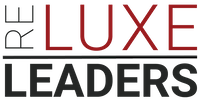“`html
9 Proven Strategies to Grow Your Top Real Estate Teams and Increase GCI
Why Growing Top Teams Matters for GCI
In elite real estate brokerages, the Pareto Principle significantly skews — the top 10% of agents often generate up to 70% of gross commission income (GCI). Yet, recent trends have pushed this to an even more concentrated reality, nearing a 94/6 split in many boutique and mid-size brokerages.
For broker-owners focused on scalable growth, simply acquiring more leads or expanding existing teams externally falls short. The strategic leverage lies in internal development: growing and segmenting your highest producers, optimizing their support systems, and amplifying performance with precision. Even a 20% growth in your top teams can exponentially increase GCI, given team margins are typically 3 to 7 times higher than standard brokerage splits.
Segmented and Focused Support Across Multiple Teams
The key to sustainable growth involves creating a support platform tailored to the distinct needs of each team. This means segmenting support roles by function, specialty, and task complexity, removing operational burdens from sales leaders so they can focus exclusively on client engagement and deal-closing.
Expand Your Tech Stack and AI Adoption
Technology adoption in brokerages often languishes around 20%, with only a fraction utilizing 20% of the available functionality. Closing this gap requires decisive action:
- Implement comprehensive CRM platforms that support multiple teams with customizable access controls.
- Integrate AI tools for lead management, client behavior analysis, and personalized outreach automation.
- Train and empower your teams to leverage advanced features, ensuring deeper adoption and consistent usage.
According to Housing Wire, this strategic tech adoption correlates directly with notable increases in team output and broker profitability.
Efficient Management of Leads and Clients
Establish standardized processes for lead intake, filtering, nurturing, and disposition within your CRM environment. Creating a “single, high-performing mousetrap” rather than fragmented systems maximizes lead conversion rates and reduces latency.
Assign a CRM Manager to oversee up to $4M–$5M in team GCI production, balancing pipeline velocity and ensuring accountability. This approach supports consistent lead flow while maintaining pipeline quality and sales velocity.
Lead Generation Consolidation
The broadening sales funnel now spans online platforms, organic channels, open houses, and client referrals. A common industry gap is siloed lead capture without seamless integration.
Brokers must implement uniform intake procedures enriched by CRM automation and AI-driven data cleansing to effectively incorporate new leads. Segment lead sources allowing tailored nurturing strategies matched to lead origin and buying readiness.
Supplement sales teams with support focused on lead data management, improving conversion rates by ensuring thorough, timely client engagement.
Creating a Bandwidth of Deep Support
Paradoxically, fewer than 10% of real estate teams leverage virtual assistants despite the clear productivity advantages. Allocating 50% of routine, repetitive workloads to specialized support roles enhances organizational bandwidth.
By removing non-core operational tasks from sales agents, you elevate the focus to the 40% of activities driving the greatest outcomes—client engagement, deal negotiation, and closing.
Improved Client Segmentation and Personalized Communication
Advanced digital marketing platforms enable brokers to segment audiences by readiness, property interests, and interaction history. This segmentation supports hyper-personalized messaging that increases conversion efficiency.
Using AI-driven analytics, develop tailored communication plans aligned with client lifecycle stages. Balance automation with human touch points to optimize engagement without sacrificing authenticity.
Leverage Your Client’s Entire Lifecycle
The typical client lifecycle in residential real estate spans 7 years between transactions, with active engagement largely limited to the 12 months during the buying or selling process.
Expanding relationship management beyond transactional windows through annual CMAs, newsletters, reviews, and personalized outreach cultivates loyalty and repeat business. This approach builds a more resilient and profitable client base over time.
Cost Allocation Methods and Approaches
Efficient team cost allocation enhances transparency and accountability within organizations. Common methods include:
- Result-based allocation: Assign shared costs proportional to team GCI or transaction volumes.
- Usage-based allocation: Allocate costs based on hours or intensity of support utilization.
- Hybrid models: Combine fixed shared costs for centralized roles with variable allocation for scalable resources.
Transparent cost-sharing incentivizes teams to maximize resource efficiency while maintaining equity.
KPI Tracking and Performance Dashboards
Critical to growing top teams is real-time visibility into key performance indicators (KPIs), including lead conversion rates, pipeline velocity, and cost per lead acquisition.
Build customized dashboards that distill complex data into actionable insights. Regularly review these with team leaders to identify bottlenecks, celebrate wins, and calibrate support adjustments.
According to Harvard Business Review, organizations that embed measurement culture at leadership and operational levels achieve measurable growth advantages.
Parting Thoughts
Growing your top real estate teams—and by extension, your GCI—is less about adding heads indiscriminately and more about crafting an ecosystem built on strategic segmentation, optimized support roles, targeted technology adoption, and data-driven management.
The path forward demands an intentional shift: adopt leadership and operational maturity that leverages technology and human capital efficiently. This sustainable scaling preserves your legacy, amplifies profitability, and solidifies your brokerage’s position at the industry’s apex.
“`





